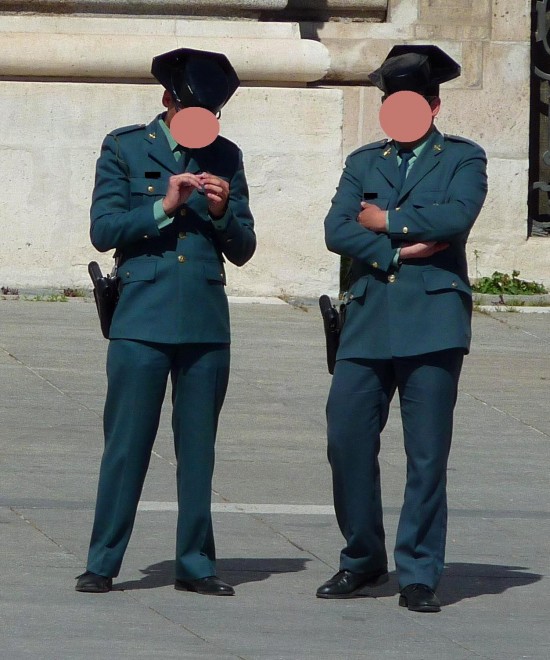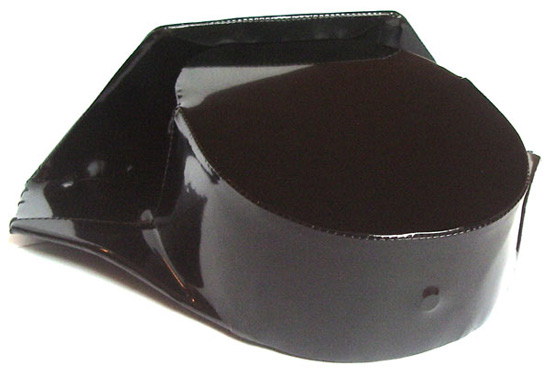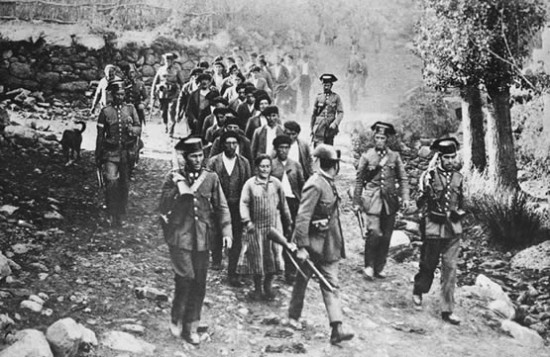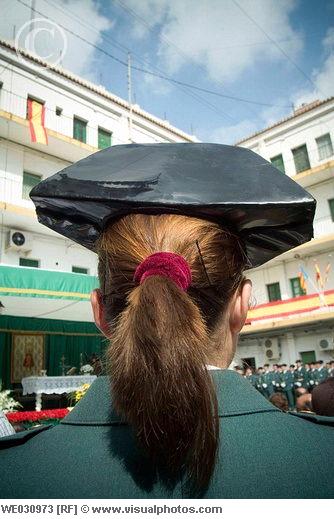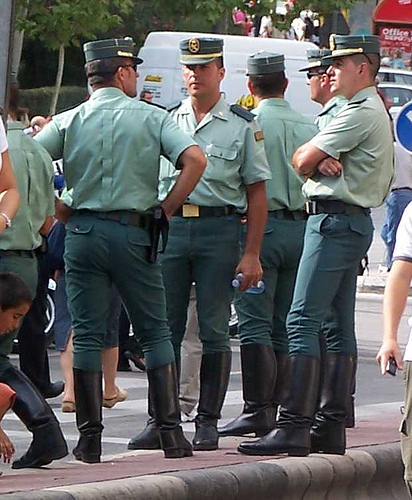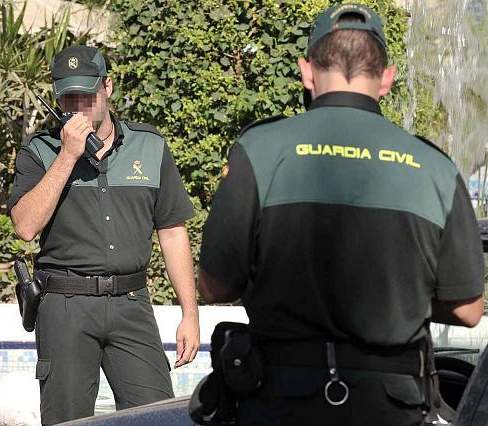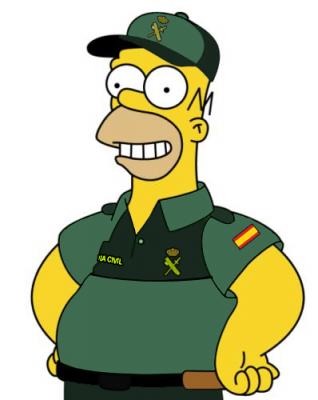Lafayette Anticipation associate curator Anna Colin talks to artist Tyler Coburn about Ergonomic Futures, a speculative project engaged with art, design, science, anthropology and writing. In this interview, Coburn discusses the research, production process and network of collaborators of a multilayered project ultimately concerned with the futures of humankind. Anna Colin: When one comes across your museum seats Ergonomic Futures (2016—) in contemporary art exhibitions—and soon in natural history, fine art, and anthropology museums—they look… [read more »]
Uniform renewal.
In January 2011 the Civil Guard of Spain, commonly known as Guardia Civil or La Benemérita (The Meritorious), renewed its uniform, unchanged since 1986. The military association inherent to their old attire was replaced by a police force aesthetic: polo shirts and cargo pants substituted button-up shirts and pleated trousers. The color of the uniform changed too: a dark shade of green replaced the former mossy color.
The most important modification, however, was the replacement of the tricornio, a three-cornered hat made of black patent leather, in the heritage of the ones worn by Spanish soldiers during the 17th century. The substitution surprised everyone; the tricornio was the quintessential symbol of the Civil Guards. Imagine supplanting the cowboy hat with a baseball cap—no small step for a military institution.
Tidiness and cleanliness were attributes emphasized in La Benemérita’s uniform code since the foundation of the institution back in 1844. The police force was created to repress revolutionary sentiment in the rural areas of Spain and to stop the spread of anti-monarchism during the reign of Queen Isabella II. Those days were not easy for the nation; political conspiracies, coups d’état, and economic recession were constant features. The population suffered continuously and made public its discontent. The founder of the gendarmerie, the aristocrat Don Francisco Javier Girón y Ezpeleta, Duque de Ahumada, believed that it was important to create a police force that the Spanish population would respect on first sight. The value of the aesthetic was given the highest importance and was carefully managed.
The elegance and uniformity of the attire was praised and valued. Blue was chosen as the main color (replaced by green in the reform of 1943) and the tricornio as the element of uniformity (Don Ramón María de Narváez y Campos, Duque de Valencia and prime minister at the time, chose the three-cornered hat used by the Spanish cavalry for the new police force headwear. The Duque de Ahumada didn’t agree with the idea, however; he favored the notion of borrowing the morrión, a steel helmet used by the Tercios, the famous and feared Spanish infantry formation of the XVI century. The Queen Isabella II had the last word; she backed the prime minister’s opinion, and the three-cornered hat was appointed official Guardia Civil headwear.)
The Guardia Civil was a tool for repression and civil order. Their constant excesses and lack of responsibility for their actions made them extremely unpopular. They were feared, and so was their uniform. The poet Federico García Lorca portrayed the brutality of the Guardia Civil in some of his poems. Furthermore, nothing signified repression better than their tricornio, and even to this day there are popular jokes that relate the “magical” power of the hat, that it transfers violence to the wearer. And that’s what we Spaniards have in mind when we see a tricornio. You fear past faults even if you haven’t had any!

But those days are gone. Or that’s what we read from this story. You have to change with the times. The Guardia Civil has evolved (it was the first European police force to admit a same-sex couple in a military installation), and so has its uniform.
The tricornio, however, won’t disappear just yet. Its use will be reserved for ceremonies and parades, and the gorra teresiana, the everyday beret and heritage of Luis Roldán, the first civilian to be entitled Directorate-General of the Police and the Civil Guard (and one of the reasons why the Spanish Socialist Workers’ Party lost the elections to the conservative People’s Party in 1996 after 14 years in the government … but that’s another hell of a story) will be replaced by a “more comfortable and modern” baseball cap. Think of it: the inherent attributes of authority, power, and law are put aside to bring in airs of casualness and practicality.

